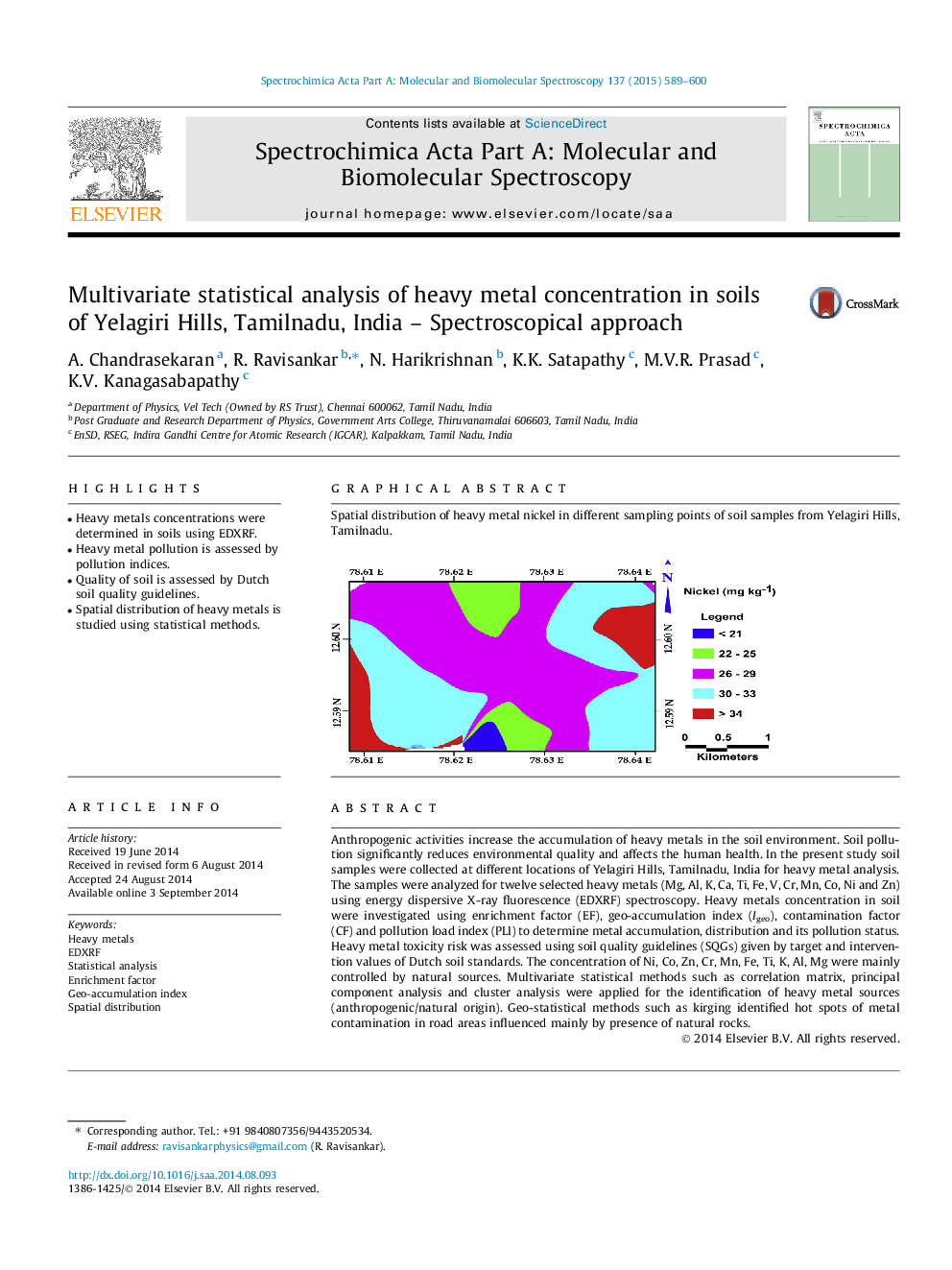| Article ID | Journal | Published Year | Pages | File Type |
|---|---|---|---|---|
| 1229281 | Spectrochimica Acta Part A: Molecular and Biomolecular Spectroscopy | 2015 | 12 Pages |
•Heavy metals concentrations were determined in soils using EDXRF.•Heavy metal pollution is assessed by pollution indices.•Quality of soil is assessed by Dutch soil quality guidelines.•Spatial distribution of heavy metals is studied using statistical methods.
Anthropogenic activities increase the accumulation of heavy metals in the soil environment. Soil pollution significantly reduces environmental quality and affects the human health. In the present study soil samples were collected at different locations of Yelagiri Hills, Tamilnadu, India for heavy metal analysis. The samples were analyzed for twelve selected heavy metals (Mg, Al, K, Ca, Ti, Fe, V, Cr, Mn, Co, Ni and Zn) using energy dispersive X-ray fluorescence (EDXRF) spectroscopy. Heavy metals concentration in soil were investigated using enrichment factor (EF), geo-accumulation index (Igeo), contamination factor (CF) and pollution load index (PLI) to determine metal accumulation, distribution and its pollution status. Heavy metal toxicity risk was assessed using soil quality guidelines (SQGs) given by target and intervention values of Dutch soil standards. The concentration of Ni, Co, Zn, Cr, Mn, Fe, Ti, K, Al, Mg were mainly controlled by natural sources. Multivariate statistical methods such as correlation matrix, principal component analysis and cluster analysis were applied for the identification of heavy metal sources (anthropogenic/natural origin). Geo-statistical methods such as kirging identified hot spots of metal contamination in road areas influenced mainly by presence of natural rocks.
Graphical abstractSpatial distribution of heavy metal nickel in different sampling points of soil samples from Yelagiri Hills, Tamilnadu.Figure optionsDownload full-size imageDownload as PowerPoint slide
